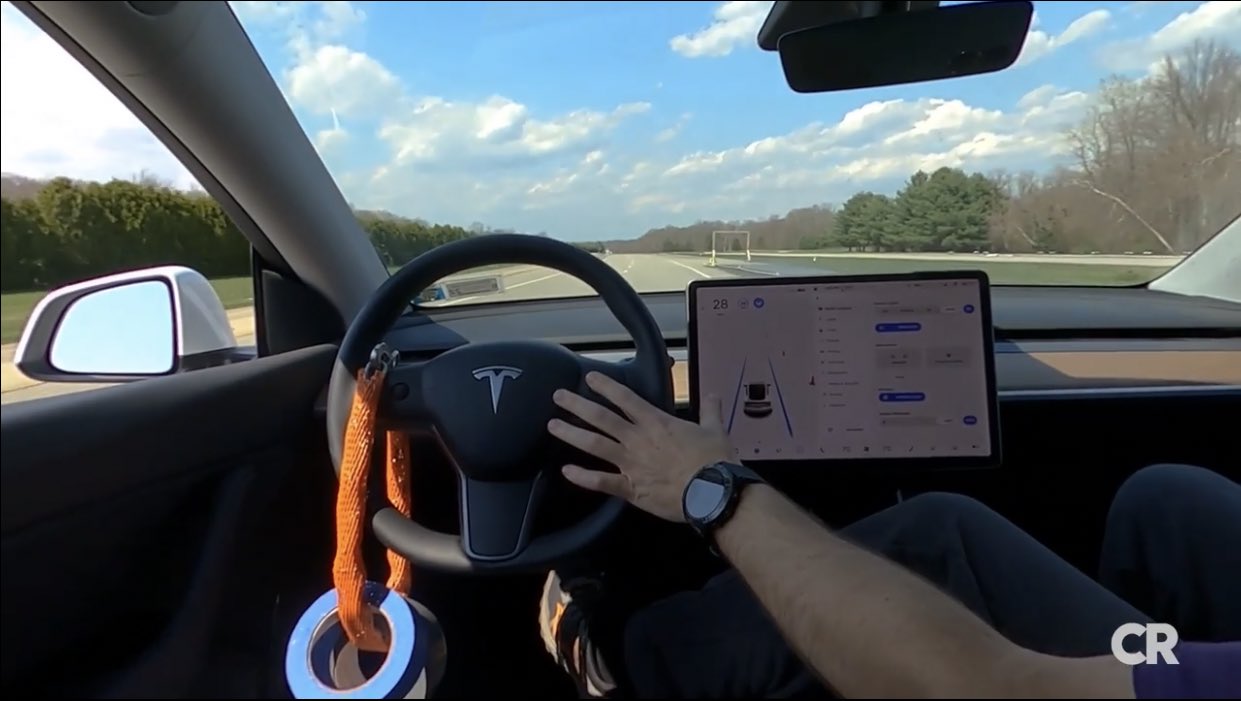
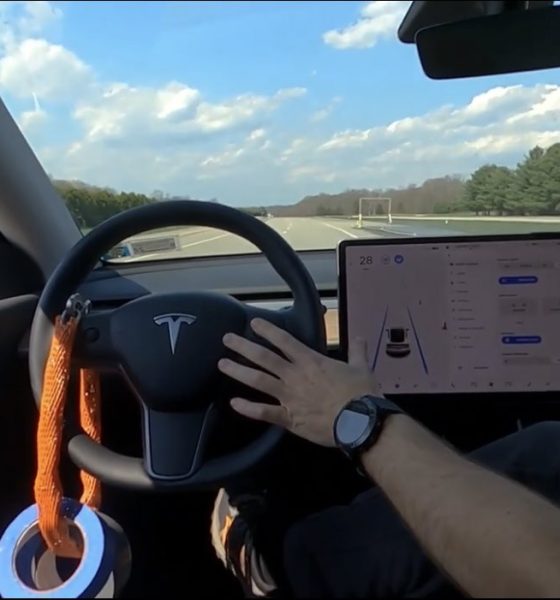
News
Opinion: Consumer Reports’ Tesla Autopilot stunt crossed a line in an already-heated EV climate
Just recently, Consumer Reports published the results of a test it conducted at its private track to demonstrate just how “easy” it was to fool Tesla’s Autopilot system into operating without a driver behind the wheel. The magazine was successful in its aim, but it also demonstrated that it takes a very determined driver and an elaborate set of procedures to bypass Tesla’s driver-monitoring systems.
Bypassing Tesla’s Active Safety Features: A Walkthrough
To accomplish its goals, Consumer Reports performed a series of blatantly illegal driving behaviors. The magazine’s team seemed to have buckled in the driver’s seatbelt without a person sitting in the seat. The driver, who was not actively belted in, then engaged Autopilot and reduced the system’s speed to zero. When the vehicle stopped, a weighted defeat device was placed on the Tesla’s steering wheel to simulate pressure from the driver’s hand. The driver then went over to the passenger seat and increased Autopilot’s speed, which enabled the vehicle to start moving again. Consumer Reports also made it a point to point out that the driver in its test did not open the vehicle’s doors, as that would disengage Autopilot.
Overall, Consumer Reports tried to demonstrate that it was easy to fool Autopilot. Only it didn’t. The magazine instead provided a reasonably comprehensive guide on how to bypass several layers of Tesla Autopilot’s driver-monitoring systems. In its piece, Consumer Reports argued that this was proof that Tesla’s driver monitoring is inadequate since it does not use eye-tracking technology like those employed in GM’s Super Cruise (or Ford’s BlueCruise). While a valid argument, this does not excuse the magazine’s demonstration. Had Tesla employed eye-tracking technology, it would have been easy for Consumer Reports to use another creative trick to fool the system just the same. If the driver’s seat in the Tesla used sensitive weight sensors, it would have been “easy” to cheat the system with a weighted object as well (a literal sack of potatoes would do).
Inasmuch as Autopilot’s driver monitoring systems are not foolproof, the contingencies in Super Cruise are likely not foolproof either, especially against a driver who’s deliberately bypassing a vehicle’s safety systems. Simply put, if a person is intentionally putting themselves in danger by participating in illegal driving behaviors, no driver-monitoring system would be enough. Nevertheless, the magazine suggested that when it comes to Tesla, the fact that Autopilot could be fooled by a defeat device and an elaborate set of procedures means that the EV maker is at fault.
The Allure of Tribalism
Humans are tribal creatures by nature, as concluded in a 2019 study from the Association for Psychological Science. It is then no surprise that tribalism is prevalent everywhere. These tribes exist in numerous segments, from politics to consumer products. A look at the current political climate in countries such as the United States and the Philippines would show this. The years-long arguments against fans of iPhones and Android smartphones, or console and PC gamers, also hint at the notion that groups among similarly-minded individuals are bound to be formed.
The auto sector is no stranger to tribes, as seen in the rivalry between enthusiasts of Ford and Chevrolet vehicles. The Mustang vs. Camaro debate is still ongoing today, as is the pickup rivalry between the Ford F-150 and the Chevy Silverado. Tribes also exist in the racing segment, with groups forming among enthusiasts of classic, big-engined American muscle cars and highly modified Japanese imports. Such is simply the nature of the car industry. There are rivalries among companies and those that support them.
Congratulations on the Mach E! Sustainable/electric cars are the future!! Excited to see this announcement from Ford, as it will encourage other carmakers to go electric too.
— Elon Musk (@elonmusk) November 18, 2019
And for the most part, this is okay, especially if members of certain tribes are willing to coexist with the other. Tesla, however, has been caught in the crossfire more often than not. This has spawned a narrative that has become quite popular among the company’s critics and the mainstream media—that Tesla has a cult of followers that blindly worship Elon Musk, and actively attack anyone supporting any other vehicle that is not a Tesla.
While fringe groups of aggressive Tesla fans exist, they certainly do not comprise the majority of the company’s supporters. During the Mach-E’s announcement, CEO Elon Musk actively supported the vehicle, even as classic Mustang fans threw up their hands and bashed the electric car in frustration at the notion of a crossover being given the classic sports car’s iconic name. Even today, when tempers in the EV community online are flared, numerous strong voices remain supportive of the Mach-E.
A Fallacy of Composition
Consumer Reports’ Autopilot workaround test garnered a ton of attention, and it did not take long before Ford CEO Jim Farley retweeted the magazine’s findings, noting that Teslas will drive with no one in the driver’s seat. This is quite disingenuous, as vehicles have always been capable of operating without anyone in the driver’s seat, provided that drivers actively participate in illegal behaviors (such as putting a stone or a brick on the accelerator). Consumer Reports’ own staff also engaged queries from numerous Tesla supporters online to mixed results. Head of Connected and Automated Vehicles at Consumer Reports Kelly Frunkhouser, for one, stood her ground against critical comments against the magazine’s test to such a degree that she opted to mock a Tesla supporter for having only four followers on Twitter. The tweet was later deleted.
Tesla Will Drive With No One in the Driver's Seat – Consumer Reports https://t.co/HGGYoAOHv6
— Jim Farley (@jimfarley98) April 22, 2021
The unfortunate thing in this whole scenario is the fact that some Tesla supporters actually had valid points against Consumer Reports’ Autopilot conclusions. Why was Autopilot not benchmarked against comparable systems like Super Cruise and regular cruise control? What are the safety stats of systems like Super Cruise? Why not cite data that shows how many accidents occur every year due to improper cruise control use? These are but a few of the questions that were brought to the magazine’s attention, but most were dismissed because Tesla fans are just a “cult” (queue in the Simpsons meme showing “weird nerds” shielding Elon Musk from “valid criticism”).
In later tweets, Consumer Reports Head of Auto Testing Jake Fisher called back to the magazine’s interaction with Tesla back in the Model 3’s early days, when the vehicle initially missed the agency’s “Recommended” rating because of its brakes. In that instance, Tesla acknowledged the issue and rolled out a software update to address it, which resulted in the Model 3 later getting a “Recommended” rating. CR’s Autopilot demo is not the same, however, as this time around, the alleged faults of Tesla’s driver monitoring systems were intentionally being bypassed. This is not a “we observed something wrong that Tesla needs to fix” situation. This is an “Autopilot can be fooled if we try really hard and thus Tesla is at fault” situation. The Model 3 brakes were indeed valid criticism, and Tesla reacted as such. A series of procedures that bypass active safety features, maybe not so much.
When CR first tested the Tesla Model 3, we complained about the ride, seat comfort, wind noise, controls, and brakes. Boy were the Tesla fans pissed. Tesla OTOH improved all those things. No regrets.
— Jake Fisher (@CRcarsJake) April 23, 2021
Skeletons in the Closet and a Familiar Game Plan
While Consumer Reports prides itself in its analysis of consumer products, the magazine has shown bias in the past. Consumer Reports may not want to talk about it much today, but back in the 80s and the 90s, the magazine ended up costing the United States one of its most affordable, fun, and popular off-roaders ever — the Suzuki Samurai. Better known in other territories as the Suzuki Jimny, the Samurai was introduced in the United States in 1985.
By 1987, Suzuki was selling roughly two Samurais for every Jeep Wrangler sold. Consumer Union, the publisher of Consumer Reports, then came out with a devastating report on the Samurai in June 1988, giving the small SUV a damning “Not Acceptable” rating due to its alleged rollover risk. Consumer Reports’ conclusions were serious, and it called for a recall of the 150,000 Samurais that were already sold in the United States. Consumer Reports also urged Suzuki to refund the vehicles’ purchase price to their owners since, as per statements from then-Consumers Union assistant director David C. Berliner, “The design is inherently flawed in the Samurai. It’s not something where they can make an adjustment, or put on some hardware in order to make a difference. As designed, the only solution is to take it off the market.”
Suzuki fought Consumer Reports’ findings, and even safety watchdog group Center for Auto Safety noted that the Samurai’s rollover incidents were not unusual for such a popular vehicle. By then, the Samurai received 44 reports of rollovers with 16 deaths and 53 injuries, but Ron De Fore, director of public and consumer affairs for the safety agency, noted that such numbers were not too high considering that there are 150,000 of the SUVs on the road. De Fore also stated that of the fatal incidents surrounding the vehicle, 63% were alcohol-related, and only 24% were wearing seat belts. But despite these, Consumer Union doubled down, eventually showing a video of its tests featuring two of the Samurai’s wheels coming off the ground in a swerve test. Addressing reporters, Consumer Union technical director R. David Pittle remarked that the vehicle “literally trips over its own feet.”
Needless to say, Consumer Reports’ attacks against the Samurai tanked the SUV’s sales in the United States. By 1989, the Samurai was selling just about 5,000 units per year. Suzuki pulled out the Samurai in 1995 due to dismal sales, but in 1996, Consumer Reports added salt to the wound by highlighting its Samurai findings in its anniversary edition. This prompted a lawsuit from the Japanese carmaker, which ultimately resulted in footage of Consumer Reports’ tests on the small SUV from 1988. The video was shocking. As could be seen in the videos from Consumer Reports’ own tests, the Samurai actually performed very well, resisting rollovers so much that Technical Director David Pittle opted to change the test course to make it more challenging. Footage of the tests showed some Consumer Union staff audibly cheering when the Samurai’s wheels finally left the ground.
A Cautionary Tale
Suzuki and Consumer Union settled the lawsuit in 2004, and while the Consumer Reports publisher did not pay the Japanese carmaker any money or issue a retraction, it did issue a joint press statement clarifying that the magazine’s article about the Samurai in 1988 may have been misconstrued. It was a moral victory for Suzuki, but the damage had been done.
This is something that the EV community, the auto sector, and the media itself must keep in mind. Anyone with the least bit of comprehension understands that there is a need to transition the motoring sector to more sustainable vehicles. The auto sector could not really afford to have another Suzuki Samurai saga right now, especially considering the sustainability goals of numerous countries worldwide.
Tesla is leading the pack by a wide margin, and the company is only accelerating, with more vehicles poised to be built in Gigafactory Berlin, Giga Shanghai’s expansion, and in Gigafactory Texas. The motoring world cannot really be involved in unnecessary drama against Tesla today, as the mission to accelerate the advent of sustainability is far more important than tribal quarrels or prejudice against a group of EV enthusiasts. Does Tesla have to improve? Definitely, yes, especially when it comes to build consistency and after-sales service. Can Autopilot be safer? Absolutely, and Tesla definitely should. Was showing a walkthrough of how to illegally hack the driver-assist system using a defeat device (among many) helpful? Perhaps not.
Don’t hesitate to contact us for news tips. Just send a message to tips@teslarati.com to give us a heads up.

News
Tesla FSD (Supervised) is about to go on “widespread” release
In a comment last October, Elon Musk stated that FSD V14.2 is “for widespread use.”
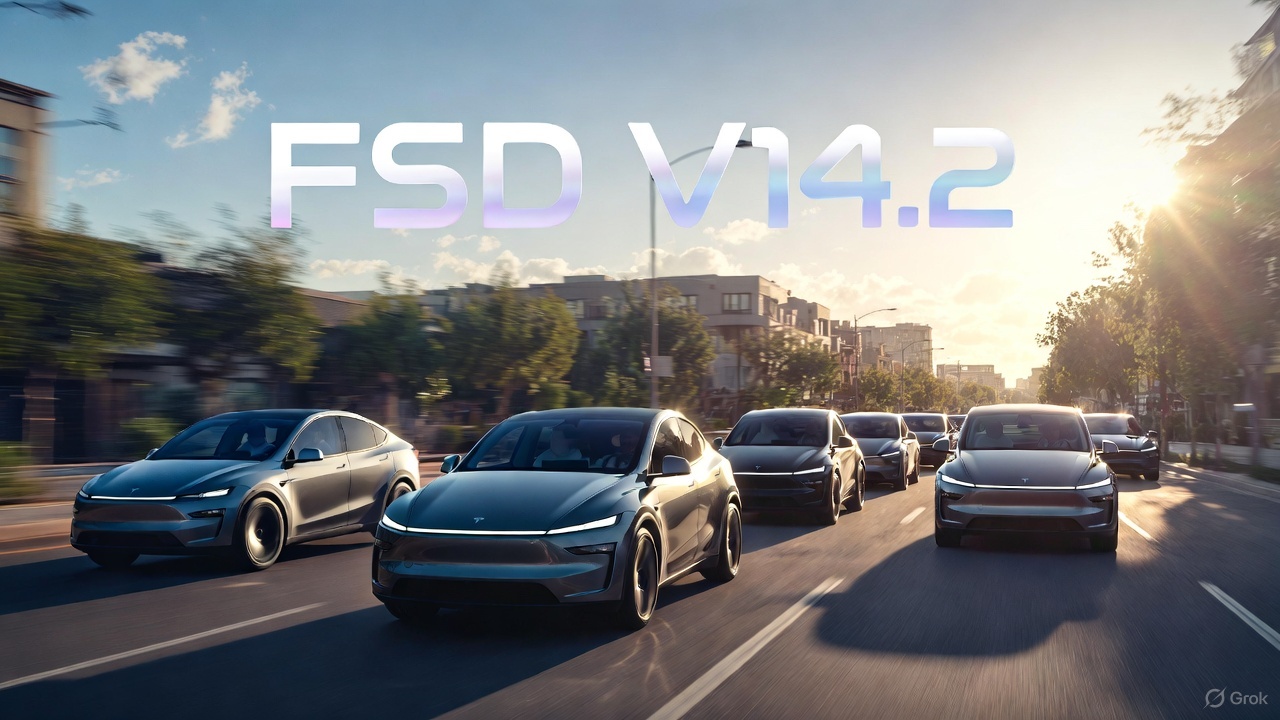
Tesla has begun rolling out Full Self-Driving (Supervised) V14.2, and with this, the wide release of the system could very well begin.
The update introduces a new high-resolution vision encoder, expanded emergency-vehicle handling, smarter routing, new parking options, and more refined driving behavior, among other improvements.
FSD V14.2 improvements
FSD (Supervised) V14.2’s release notes highlight a fully upgraded neural-network vision encoder capable of reading higher-resolution features, giving the system improved awareness of emergency vehicles, road obstacles, and even human gestures. Tesla also expanded its emergency-vehicle protocols, adding controlled pull-overs and yielding behavior for police cars, fire trucks, and ambulances, among others.
A deeper integration of navigation and routing into the vision network now allows the system to respond to blocked roads or detours in real time. The update also enhances decision-making in several complex scenarios, including unprotected turns, lane changes, vehicle cut-ins, and interactions with school buses. All in all, these improvements should help FSD (Supervised) V14.2 perform in a very smooth and comfortable manner.
Elon Musk’s predicted wide release
The significance of V14.2 grows when paired with Elon Musk’s comments from October. While responding to FSD tester AI DRIVR, who praised V14.1.2 for fixing “95% of indecisive lane changes and braking” and who noted that it was time for FSD to go on wide release, Musk stated that “14.2 for widespread use.”
FSD V14 has so far received a substantial amount of positive reviews from Tesla owners, many of whom have stated that the system now drives better than some human drivers as it is confident, cautious, and considerate at the same time. With V14.2 now rolling out, it remains to be seen if the update also makes it to the company’s wide FSD fleet, which is still populated by a large number of HW3 vehicles.
News
Tesla FSD V14.2 starts rolling out to initial batch of vehicles
It would likely only be a matter of time before FSD V14.2 videos are posted and shared on social media.
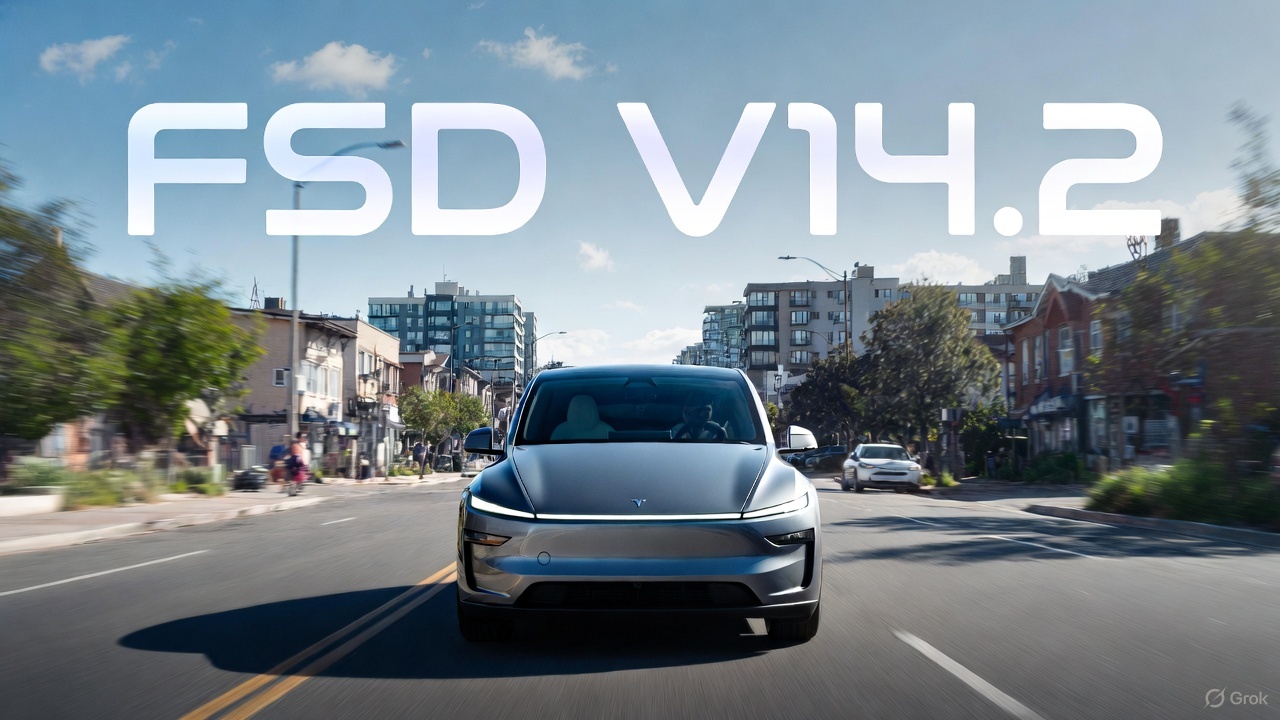
Tesla has begun pushing Full Self-Driving (Supervised) v14.2 to its initial batch of vehicles. The update was initially observed by Tesla owners and veteran FSD users on social media platform X on Friday.
So far, reports of the update have been shared by Model Y owners in California whose vehicles are equipped with the company’s AI4 hardware, though it would not be surprising if more Tesla owners across the country receive the update as well.
Based on the release notes of the update, key improvements in FSD V14.2 include a revamped neural network for better detection of emergency vehicles, obstacles, and human gestures, as well as options to select arrival spots.
It would likely only be a matter of time before FSD V14.2 videos are posted and shared on social media.
Following are the release notes of FSD (Supervised) V14.2, as shared on X by longtime FSD tester Whole Mars Catalog.
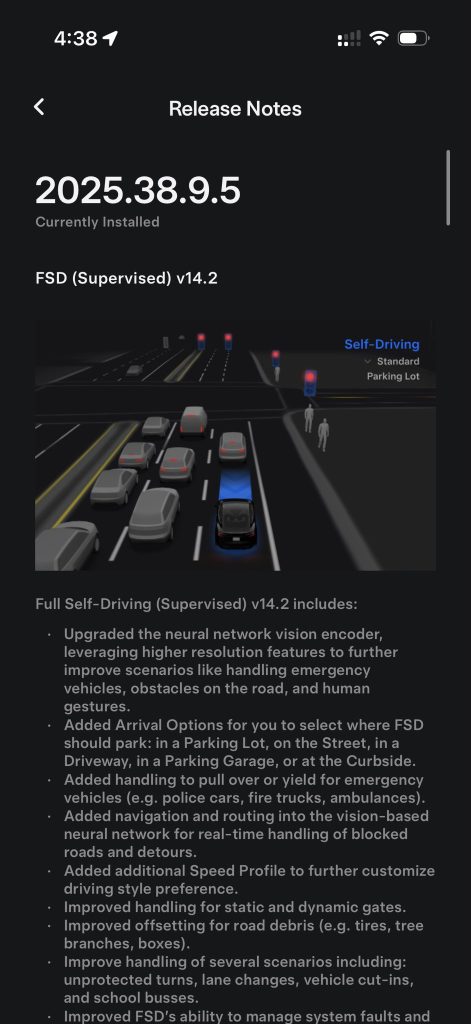
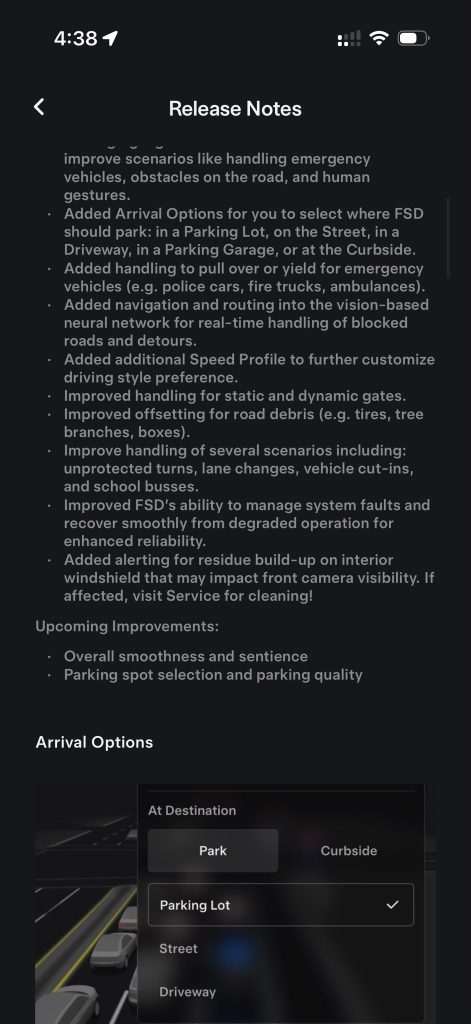
Release Notes
2025.38.9.5
Currently Installed
FSD (Supervised) v14.2
Full Self-Driving (Supervised) v14.2 includes:
- Upgraded the neural network vision encoder, leveraging higher resolution features to further improve scenarios like handling emergency vehicles, obstacles on the road, and human gestures.
- Added Arrival Options for you to select where FSD should park: in a Parking Lot, on the Street, in a Driveway, in a Parking Garage, or at the Curbside.
- Added handling to pull over or yield for emergency vehicles (e.g. police cars, fire trucks, ambulances.
- Added navigation and routing into the vision-based neural network for real-time handling of blocked roads and detours.
- Added additional Speed Profile to further customize driving style preference.
- Improved handling for static and dynamic gates.
- Improved offsetting for road debris (e.g. tires, tree branches, boxes).
- Improve handling of several scenarios including: unprotected turns, lane changes, vehicle cut-ins, and school busses.
- Improved FSD’s ability to manage system faults and improve scenarios like handling emergency vehicles, obstacles on the road, and human gestures.
- Added Arrival Options for you to select where FSD should park: in a Parking Lot, on the Street, in a Driveway, in a Parking Garage, or at the Curbside.
- Added handling to pull over or yield for emergency vehicles (e.g. police cars, fire trucks, ambulances).
- Added navigation and routing into the vision-based neural network for real-time handling of blocked roads and detours.
- Added additional Speed Profile to further customize driving style preference.
- Improved handling for static and dynamic gates.
- Improved offsetting for road debris (e.g. tires, tree branches, boxes).
- Improve handling of several scenarios, including unprotected turns, lane changes, vehicle cut-ins, and school buses.
- Improved FSD’s ability to manage system faults and recover smoothly from degraded operation for enhanced reliability.
- Added alerting for residue build-up on interior windshield that may impact front camera visibility. If affected, visit Service for cleaning!
Upcoming Improvements:
- Overall smoothness and sentience
- Parking spot selection and parking quality
News
Tesla Model X lost 400 pounds thanks to these changes
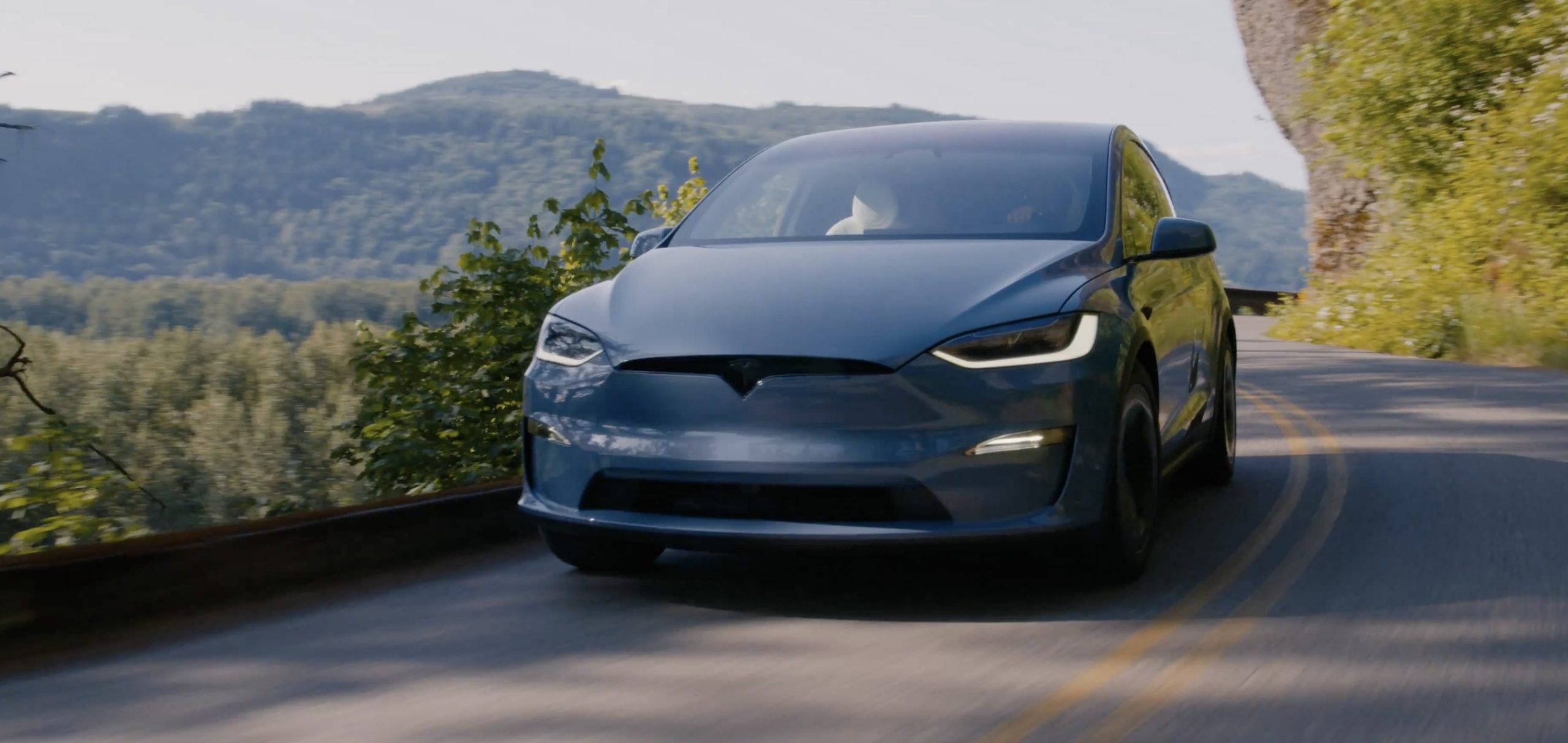
The Tesla Model X has always been one of the company’s most loved vehicles, despite its low sales figures, which can be attributed to its high price tag.
However, the Model X has been a signature item on Tesla’s menu of cars, most notably recognized by its Falcon Wing Doors, which are aware of its surroundings and open according to what’s around it.
But recent improvements to the Model X were looking slim to none, but it appears most of the fixes actually happened under the body, at least according to Tesla’s Vice President of Powertrain, Lars Moravy.
In a recent interview with Car and Driver, Moravy detailed all of the changes to the 2026 iteration of the vehicle, which was about 400 pounds lighter than it was originally. The biggest change is a modification with the rear motor, switching from an induction-type motor to a permanent-magnet design and optimizing the half-shafts, which shed about 100 pounds.
Tesla also got “almost 80 pounds out of the interior bits and pieces,” which “included making parts thinner, different manufacturing process choices, and incorporating airbag-deployment requirements into the headliner fabric,” the report said.
Additionally, the standard five-passenger, bench seat configuration saved 50 pounds by ditching pedestal mounting. This also helped with practicality, as it helped the seat fold flat. Engineers at Tesla also saved 44 pounds from the high-voltage wiring through optimizing the wiring from the charge-port DC/DC converter and switching from copper to aluminum wiring.
Tesla makes a decision on the future of its flagship Model S and Model X
Tesla also simplified the cooling system by reducing the number of radiators. It also incorporated Nürburgring cooling requirements for the Plaid variant, which saved nearly 30 pounds.
Many Tesla fans will be familiar with the megacastings, manufactured in-house by presses from IDRA, which also saves more than 20 pounds and boosts torsional stiffness by around 10 percent. Tweaks to the suspension also saved 10 pounds.
People were truly disappointed with what Tesla did with the Model S and Model X, arguing that the cars needed a more severe exterior overhaul, which might be true. However, Tesla really did a lot to reduce the weight of the vehicle, which helps increase range and efficiency. According to Grok, every 200 pounds removed adds between 7 and 15 percent to range estimations.
This makes sense considering the range estimations both increased by 7 percent from the Model X’s 2025 configuration to the 2026 builds. Range increased on the All-Wheel-Drive trim from 329 miles to 352 miles, while the Plaid went from 314 miles to 335 miles.








